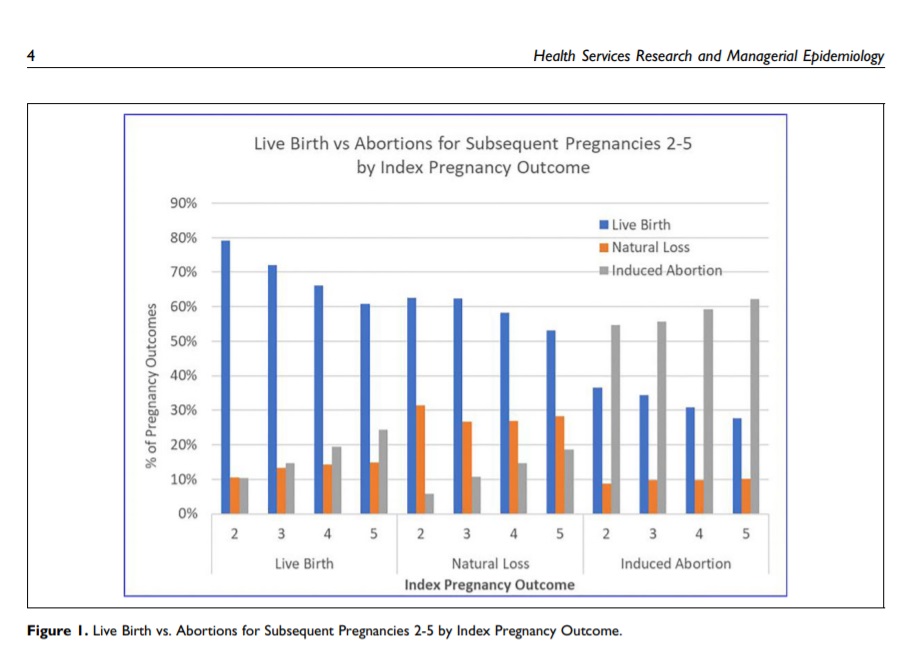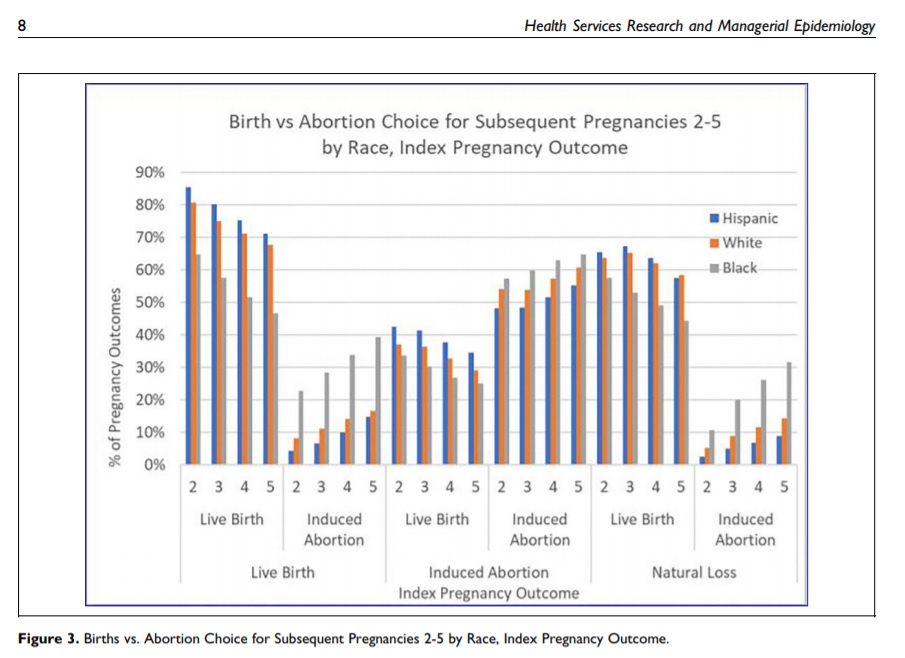Aborting a first child makes a woman more likely to abort in future pregnancies, claims a new study published in the Journal of Health Services Research and Managerial Epidemiology. This study is a first-of-its-kind, population-based analysis. Funding for the project came in part from the Charlotte Lozier Institute (CLI), the research arm of SBA List, a pro-life organization.
Study authors — James Studnicki Sc.D., MPH, MBA, Dr. John W. Fisher, Christopher Craver, and Tessa Longbons of CLI, David C. Reardon of the Elliot Institute, and American Association of Pro-Life Obstetricians and Gynecologists (AAPLOG) Executive Director Dr. Donna J. Harrison — looked at 7.3 million pregnancy outcomes of Medicaid-eligible women over 13 years of age occurring from 1999-2014 in 17 states which allowed for the use of state taxpayer funds to pay for abortions.
Women who abort their first pregnancies are more likely to have subsequent abortions
The study found that pregnant women who aborted their first or “index” child were more likely to experience an abortion following each subsequent pregnancy than women who gave birth or experienced a loss during their first pregnancies. These women were also increasingly likely to have an abortion (rather than a birth) with each subsequent pregnancy.
Women who gave birth or experienced natural losses during their first pregnancies were more likely to have another birth (rather than abortion) with each subsequent pregnancy.

Live Birth v Abortion in a subsequent pregnancy
Researchers found that “[w]omen under the age of 17 who experience an index birth [first pregnancy resulting in a live birth] were more likely to experience another birth rather than an abortion for subsequent pregnancies… At the second pregnancy, they are 5.8 times more likely to have a birth than an abortion. By the fifth pregnancy, they are 2.2 times as likely.” Results remained consistent among other age groups, but the authors noted that “women 36 [plus] are the most likely to select birth rather than abortion for subsequent pregnancies,” unless their first pregnancy was an abortion.
Black women who aborted first pregnancies more likely than other races to have subsequent abortions
While authors found a similar result among differing races, they discovered that outcomes related to the first pregnancies “had significant racial differences.”
- Hispanic women had the highest percent of first pregnancies resulting in birth (86.8%) and the lowest percent of first pregnancies resulting in abortion (3.4%). Hispanic women were about 21 times more likely to have a birth rather than an abortion for a pregnancy following their first birth.
- Black women had the lowest percent of first pregnancies resulting in birth (72.3%) and the highest percent of first pregnancies resulting in abortion (16.8%). Black women who aborted their first pregnancies were more likely than white and Hispanic women to have an induced abortion for a subsequent pregnancy.

Birth v Abortion and subsequent pregnancies by race
According to the authors, “low-income women who have abortions are more likely to have more overall pregnancies, including more subsequent abortions, [and this] would tend to support the body of evidence indicating that abortion is associated with greater subsequent reproductive health risks,” the authors also wrote. “The hope that easier access to abortion would decrease maternal mortality has been rebutted by evidence to the contrary.”
The researchers also found that in states that use taxpayer dollars to fund abortions, Medicaid beneficiaries represented more than half of all abortions, a fact previously documented by Live Action News and others.
A 2018 Guttmacher analysis found “Medicaid was the second-most-common method of payment, reported by 24% of abortion patients,” because the “overwhelming majority” of patients lived in states that allow state taxpayer-funded abortion. In 2017, Guttmacher revealed that women who have taxpayer-funded abortions also tend to have more abortions, and revealed that the majority of those women were using contraception when they became pregnant.
“Patients who paid for their abortion procedure with their own funds were less likely to have had a prior abortion than those who used health insurance or received financial assistance,” Guttmacher wrote.
“Like” Live Action News on Facebook for more pro-life news and commentary!







